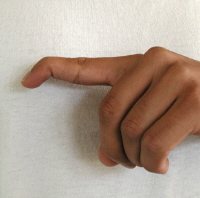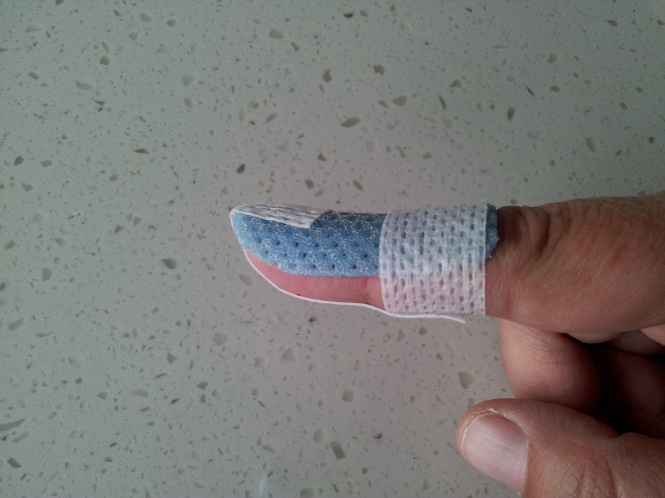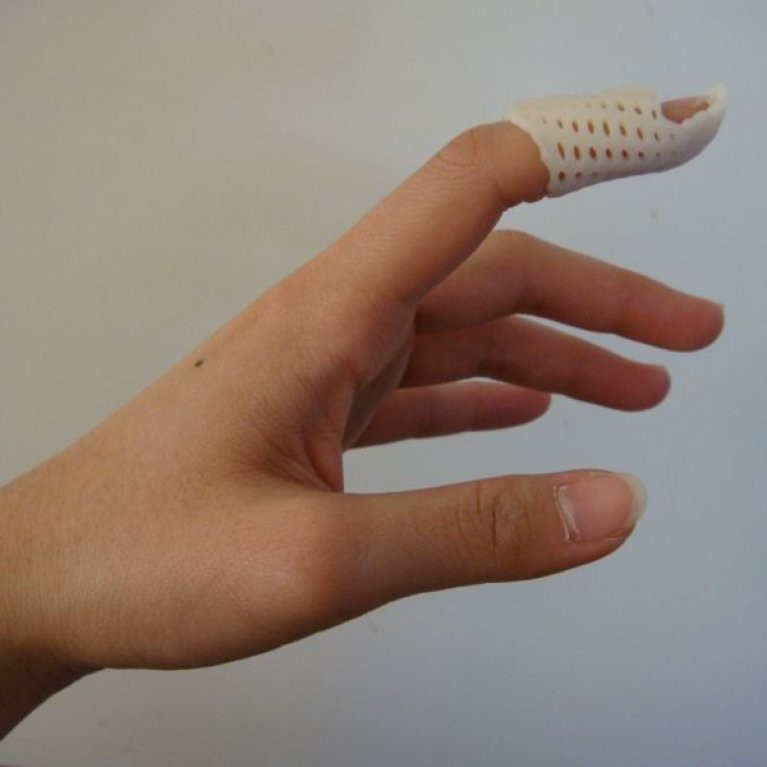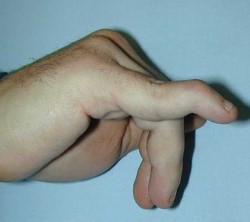Finger injuries are common in life – our hands are how we interact with the world, and so whether it be through sport, work or just cleaning the house at home, our fingers typically take the brunt of any accidents. One of the most common injuries is one where the tip of the finger seems to droop.
You may have knocked your finger at some point and noticed that the end of it hangs down, and no matter how hard to try and straighten it with your muscles, it just won’t go. You might be able to push it straight with your other hand, but when you let go the end just drops down again. This injury is called a mallet finger. A mallet finger involves a tendon, called the terminal extensor tendon, that straightens the end joint of the finger (called the DIP joint). When your finger is being held straight and a sudden force knocks the end of it into a bend, this tendon can come away from the bone. This injury is especially common in ball sports, where the ball contacts the end of the finger, but it can also happen very easily, like knocking your finger while wiping down a bench or even pulling up your pants!

There are two types of mallet finger injuries; one where the tendon comes cleanly away from the bone it connects to, and one where the tendon pulls off a boney fragment. It is important to differentiate between the two injuries as they present slightly differently and will heal differently. When a boney fragment comes away, this is called a mallet avulsion fracture, and people will experience pain and redness on the top of their finger, as well as a noticeable droop at the end. An xray will confirm whether there is a fracture or not. When the tendon just comes cleanly away from the bone, it typically causes no pain or redness at all, and people just have the droop at the end of their finger. This can be confusing for some people – how can something be seriously injured if it doesn’t hurt? It is not uncommon for people in this situation to think that their finger will correct itself over time, but unfortunately this is not the case. This is why mallet fingers can go untreated for some time before people seek assistance. Mallet injuries can also happen on thumbs, and are treated the same way as mallet fingers.


Treating a mallet finger is generally straightforward if it seen quickly. This is the annoying part though – even though the injury appears deceptively little, it requires a period of 6-8 weeks of splinting the finger dead straight 24/7 in order for the tendon to heal. The splint can’t be removed, even to have a shower. After this initial 6-8 week period of keeping the joint immobilised, the splint must be worn for another 2-4 weeks, but now allowing the joint to move and exercise. I know… that’s a long time right! Unfortunately this how long it takes for the injury to heal correctly, but thankfully the outcomes are usually very good! A custom made splint will be the most beneficial as this will ensure your finger is positioned in the best possible position for healing. For people who have a severe mallet injury, for example when they have a very large boney fracture or if it has been left untreated for a long time, surgery can be required to realign and stabilise the affected structures. Unfortunately the splinting process above remains much the same after you have surgery, but again the results are typically excellent!


If you leave a mallet finger untreated, you are at risk of multiple issues. One is called a swan neck deformity – due to the changes in biomechanics of the finger, the second joint of the finger (called the PIP joint) can begin to hyperextend. If this hyperextension is severe enough, the joint can lock itself in hyperextension and can’t be bent without help. If this occurs without and treatment isn’t sought, it can become permanent. Other risk factors of untreated mallet fingers are osteoarthritis and stiffness.

So if you notice a droop at the end of your finger (or thumb!) that can’t be extended, you might just have a mallet finger. If this is the case, be sure to find your local hand therapist for an assessment to get things straightened out!
